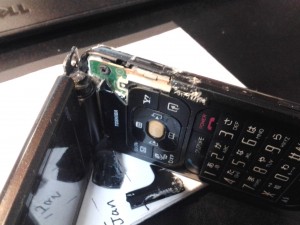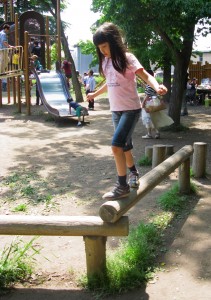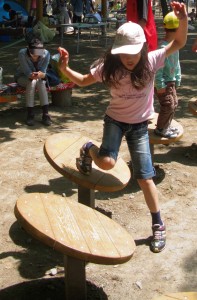Our in-laws recently sent us a box full of fresh bamboo shoot which means I’m now getting to enjoy one of my favorite foods in Japan: rice with bamboo shoot and chicken. (I’m also partial to simply slicing bamboo shoot, boiling it and serving it with mayonnaise.)
One of the interesting things about travel, and about living overseas, is the opportunity to try new and strange foods that, in your normal life, seem very strange but after a while become normal. I first tried bamboo shoot after a couple of my adult students took me out into the woods to bag and kill my own bamboo.
I’ve written before about my relationship with raw fish and about how eating too much of certain foods has ruined them for me. However, every now and then I find something new–to me anyway–that I like more than you would expect. Soon after I moved to Japan, I joined a trip to visit the Tateyama Kurobe Alpine Route. This required I stay overnight with a friend who offered me a concoction called Vegemite which, I believe, is yeast waste cleaned out of beer fermentation tanks and fed to an unsuspecting public as breakfast food. It turns out, though, that I actually like Vegemite. I even like dunking Pretz sticks in it and eating as a dip.
On the same trip we passed through a souvenir store that was offering free samples of various exotic foodstuffs. I tried something that appeared to be smoked ham, but actually turned out to be smoked horse meat. This grossed out a couple of my travel companions, and they laughed at me about it, but It turns out I actually like smoked horse. Years later I would discover that I also like raw horse. (Don’t judge me; one of the odd delicacies when I lived in Colorado was Rocky Mountain Oysters, so there.)
All of this, in an odd way, overlaps with being married to a foreign person. It’s no exaggeration to say that since I’ve been married I’ve eaten more of certain foods that I’d either never tried or didn’t like. Those include turnips, in various forms, pumpkin, cabbage, spinach, carp and raw eggs. Luckily there are only a couple things in Japan that I’ve found I don’t like, including oshiruko and the sweetened fried eggs served as sushi. I have, however, had a difficult time convincing She Who Must Be Obeyed that certain foods (cauliflower, broccoli and spinach) are meant to be served raw–or perhaps lightly blanched–or in the case of spinach, covered in bacon grease and freshly cooked bacon. She Who Must Be Obeyed finds this idea questionable/gross–although she is interested in the spinach salad–and always cooks my broccoli a little bit too long.
That’s right, in part of my world, raw horse is normal, raw broccoli is not.




